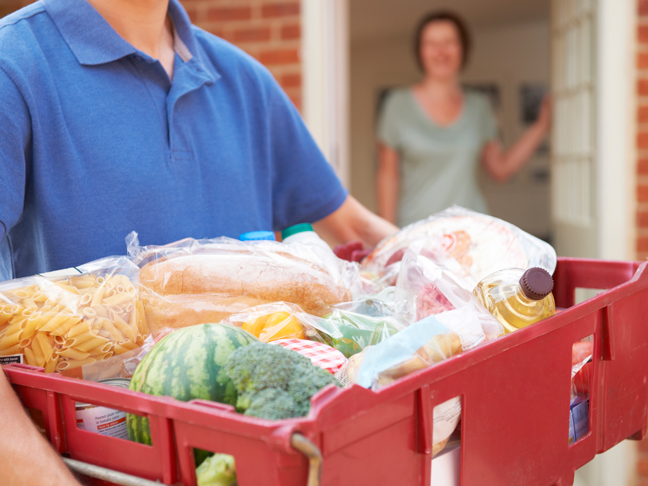In the spirit of National Nutrition Month, here are 4 of the top trends nutritionists are buzzing about that can help you turn up the “Amazing” inside of you this season:
1. Straight to your door
The rapid growth of new “store to door” delivery options has shortened the list of excuses we all have when it comes to not having the right foods on hand. There is a whole new culture of grocery delivery services for the time strapped. There are online Community Supported Agriculture (CSA) options, a special arrangement you make with a farmer to purchase and receive seasonal produce, that let you support your local grower (see Trend #4). And for those who crave a little extra help in the kitchen, a slew of new, innovative companies will send you ready-to-cook dinners with ingredients that are preportioned, along with beautiful recipes to show you how to pull them all together. These services can help you stick to your healthy goals with minimal effort and stretch your culinary adventure; they even take the brain work out of that question many a mom dreads (myself included): “Mom, what’s for dinner?”
2. Track it!
Giving new meaning to the maxim “know thyself,” wearable technology is all the rage, tracking our sleep, steps, calories burned and more. BUT—when was the last time you tracked your fruits and veggies? One of the most consistent findings about American dietary habits is that we fall short when it comes to getting enough produce. For vibrant health and energy today, as well as to significantly help reduce your risk of cancer, heart disease, stroke and high blood pressure, aim for at least 2 cups of fruit and 2.5 cups of vegetables every day (check www.choosemyplate.gov for specific recommendations based on your age, gender and activity level). Start strong when you rise and shine with an 8 oz. glass of 100% Florida OJ (which counts as 1 cup of fruit) to help complement your intake of whole fruit: It delivers that amazing taste along with an impressive list of powerhouse nutrients like vitamin C, folate and potassium. And spring is chock-full of fresh finds at the market, from asparagus and strawberries to peaches and baby lettuces, that can help you reach your goal deliciously. No wearables? No problem: a simple pen and paper is perfect. Or you can grab your smartphone and start snapping—the proof is in the photos.
3. Limit added sugars
Added sugars are one of the hot buttons of science right now, as multiple lines of evidence are raising questions about their potential role in insulin resistance, type 2 diabetes, heart disease and obesity. Indeed, added sugars are one of the top challenges many families face when it comes to reading labels and getting healthy meals on the table that the whole family can enjoy. Your best defense? Until we have clear labeling on added versus naturally occurring sugars (which has been proposed), read ingredients lists and choose foods and beverages with no added sugars on the label as often as you can when building meals and snacks. Stick to plain, whole, minimally processed options and season yourself—it puts you in control of the amounts of added sugars, fats and sodium you consume.
4. Know your grower, know your food
There’s been a surge in demand from consumers to connect directly with their growers and have greater confidence in knowing where the foods and beverages they buy come from. This trend has been instrumental in strengthening our local and regional systems of growers across the U.S.: According to the USDA, the number of farmers markets has grown by 67% since 2008, with over 7,800 farmers markets now operating across the country*. When was the last time you connected with your local growers? Can you hit a market this weekend to take advantage of spring finds? I recently had the privilege of visiting two visionary Florida growers during peak citrus season, slicing and slurping my way through one juicy, sun-sweetened orange after the next.
*http://www.usda.gov/wps/portal/usda/usdahome?navid=KYF_MISSION USDA Know Your Farmer, Know Your Food.
image: Getty / MachineHeadz
This post was sponsored by the Florida Department of Citrus








